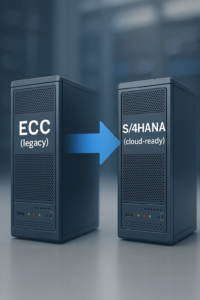Exploring the Power of SAP Analytics Cloud (SAC): In the fast-paced world of business, data-driven decision-making has become paramount. SAP Analytics Cloud (SAC) emerges as a powerful solution to leverage data for insightful business decisions. This comprehensive guide will delve into the various facets of SAP SAC, shedding light on its capabilities, integration options, and best practices.
Understanding SAP Analytics Cloud (SAP SAC)
SAP Analytics Cloud is a cutting-edge cloud-based platform that combines business intelligence, augmented analytics, and planning in a single solution. It empowers organizations to access, analyze, visualize, and collaborate over data to gain meaningful insights. Let’s explore some key areas of SAP SAC.
Unveiling Key Features
- Data Visualization: SAP SAC offers intuitive drag-and-drop tools for creating interactive dashboards and reports, enabling users to turn raw data into actionable insights.
- Predictive Analytics: Leverage machine learning algorithms to predict future outcomes based on historical data, helping businesses make informed decisions.
- Planning and Budgeting: SAP SAC allows organizations to streamline their planning processes, from budgeting to forecasting, enabling accurate resource allocation.
- Augmented Analytics: The platform integrates natural language processing (NLP) to provide instant insights by simply asking questions in plain language.
Integration and Connectivity
SAP SAC doesn’t exist in isolation; it seamlessly integrates with various data sources and systems, enhancing its capabilities.
- Live Data Connectivity: Connect to live data sources, like SAP HANA, SAP S/4HANA, and other databases, to ensure real-time insights.
- Hybrid Deployment: Organizations can choose a hybrid approach, combining on-premises data with cloud analytics, ensuring data security and flexibility.
Getting the Best Out of SAP Analytics Cloud
Building Effective Dashboards
Creating impactful dashboards is a crucial aspect of SAP SAC. Follow these best practices:
- Storyboarding: Plan your dashboard layout and flow to ensure a clear and coherent narrative.
- Visualization Choices: Select appropriate visualizations for different types of data, ensuring clarity and relevance.
- Interactive Elements: Include filters, drill-downs, and dynamic elements to enable users to interact with the data.
Data Modeling and Preparation
- Data Transformation: Cleanse and transform your data using SAP SAC’s data modeling capabilities, ensuring accurate analysis.
- Advanced Calculations: Leverage custom calculations to derive insights that standard metrics might miss.
Collaboration and Sharing
- Collaborative Analysis: Enable collaboration by sharing insights with colleagues, allowing them to provide input and enhance decision-making.
- Scheduled Reports: Set up scheduled report delivery to ensure stakeholders receive updated insights regularly.
Future of SAP Analytics Cloud
SAP SAC is constantly evolving to meet the dynamic needs of modern businesses. The integration of AI and machine learning will continue to enhance predictive and prescriptive analytics capabilities, making it a crucial tool for businesses aiming to stay ahead in the data-driven landscape.
Conclusion
SAP Analytics Cloud (SAP SAC) is much more than just a business intelligence tool; it’s a comprehensive platform that empowers organizations to harness the true potential of their data. From data visualization to predictive analytics, SAP SAC offers a range of features that help businesses make informed decisions. By following best practices and staying updated with its evolving capabilities, organizations can unlock a new level of data-driven success. Embrace SAP SAC today and pave the way for a future fueled by insights. Read More.


 RECOGNISED WORLD OVER SOLUTIONS
RECOGNISED WORLD OVER SOLUTIONS
 Find out how BSC GLOBAL digitally transformed P2P cycle for worlds renowned brand in Automobile
Find out how BSC GLOBAL digitally transformed P2P cycle for worlds renowned brand in Automobile










